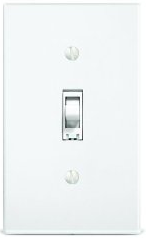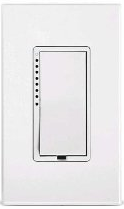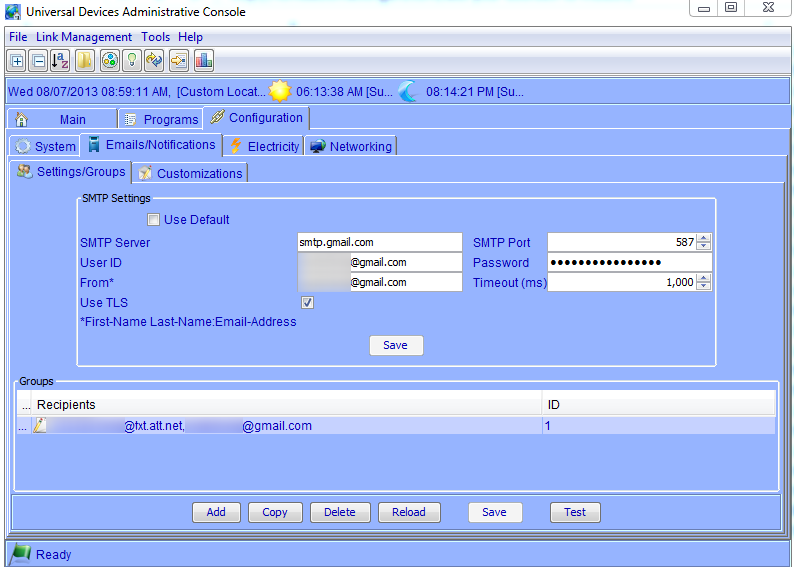You’re on your way to setting up an Insteon network in your home! You have your ISY-994i as the central controller, and have set up an ApplicanceLinc to get your feet wet. Now it’s time to start planning for your first wall switch.
Before we get into the process of actually installing the switch, let’s first consider your options. Unlike your run-of-the-mill light switch, Insteon switches are powerful devices that act as a node on your mesh network, so you have quite a few options depending on what you plan on using for the switch, what features you want, where you plan on installing it, and what load it will be powering.
This was something that I didn’t really have a grasp on when I started, and in hindsight I over-payed for some switches in my house (for example, by installing a high-load dimming switch on a 3-way circuit when the switch didn’t need to have the load or dimming capabilities). So let’s take a look at the available options, and the questions you should ask yourself for each and every switch you plan on installing.
Appearance: What do I want the switch to look like?
Insteon switches come in two basic types, and many different colors. The first question you should ask yourself is whether you want a “toggle-style” switch or a “paddle-style” switch.
 Toggle Switch |
 Paddle Switch |
Some people like the toggle-style switches because they’re easier to see from a distance whether the switch is “on” (up) or “off” (down). But, with Insteon, you shouldn’t choose them for that reason. Neither of these switches physically stay in the up and down position – you just push them up or down and they return to center without indicating on or off. Only the paddle style has a visual indicator of the state of the switch – which you can see by the little LEDs next to the switch, not the actual position. Because they can indicate the state of the switch visually, I recommend the paddle-style switches. For example, suppose you have a basement light with a switch in the Kitchen to control it. The paddle-style switch will give you an indication of whether the light is on or not, even if you can’t see the light itself. On the other hand, some people prefer the toggle-style simply for aesthetic reasons or they find it’s easier to “feel in the dark”, say in a bathroom in the middle of the night.
Finally, consider that many switches have various color options, such as white, almond, ivory, brown, or black, to match your home decor.
Read on for more switch features…
Capacity: What will this switch be controlling?
Most switches are rated for about 400-500 watts. This is fine for your normal room with a light or two. But larger circuits such as overhead “can lights” can add up load quickly. For example, my basement had 9 60-watt cans in it. Adding up the wattage of each bulb, the switch controlling those lights was handling a 540 watt load. So I needed to get a high-capacity switch (1000 watts) for that particular location.
Dimming: Do you want a simple on/off toggle, or dimming capability?
You can either get your standard on/off toggle switch, or you can get one with dimming capability. As seen in the picture of the paddle switch above, there are several LEDs next to the switch. All paddles have these lights, but if they’re dimmer switches, you can hold down the “up” or “down” position to dim or brighten the lights, and the LED will indicate the approximate brightness setting.
3-way: Will multiple switches control one set of lights?
We’ll cover 3-way switches here soon, but remember that any switch can control any other switch via “scenes”. It’s important to remember that only one of those switches actually control the “load” (i.e., power the lights themselves). All the other switches simply send a signal to that one to turn on, off, or dim. For this reason, in the example above with the basement lights, only the switch powering the lights themselves needed to be a high-capacity dimmer switch – the others could be of the less expensive low-capacity variety because they are simply sending a signal to the load-bearing switch to turn on and set dim levels.
Dual-band: Will you have wireless devices near-by?
Remember, your switches aren’t just switches. Each devices forms part of the Insteon mesh network, acting as a relay to allow devices on your network to communicate with each other. In addition to building a wired mesh network on your power lines, you can (and should) have a fair share of “dual-band” switches on your network. These switches act as a bridge for the wireless devices that you will inevitably be adding to your network, such as motion sensors, contact switches, and thermostats
. I’d suggest at least one or two dual-band switches per floor – the more the better.
Below are some representative devices from Amazon; if you have more specific needs, Smarthome.com offers a much better selection but significantly worse shipping and return policy.
| Model | Type | High Capacity? | Dimming? | Dual-Band? |
| 2466SW Toggle |
no | no | no | |
| 2477D Paddle |
no | yes | yes | |
| 2477S Paddle |
yes | no | yes | |
| 2474DDWH Paddle |
no | yes | no – RF only (useful for homes with no ground wire) |


